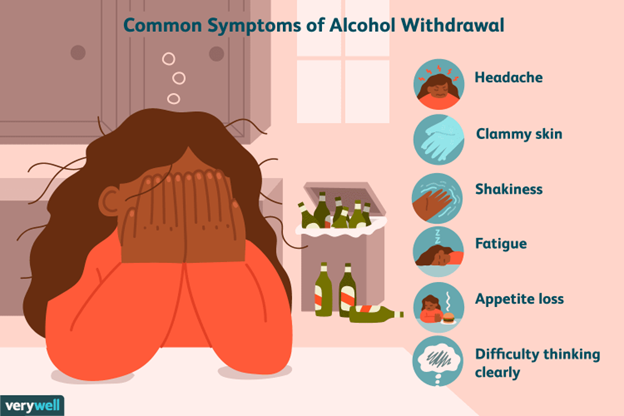When a client diagnosed with schizophrenia was discharged 6 months ago, haloperidol was prescribed. The client now says, "I stopped taking those pills. They made me feel like a robot." What are common side effects the nurse should validate with the client?
Sedation and muscle stiffness
Sweating, nausea, and diarrhea
Mild fever, sore throat, and skin rash
Headache, watery eyes, and runny nose
The Correct Answer is A
A) Correct. Haloperidol, a first-generation antipsychotic, commonly causes side effects like sedation (drowsiness) and extrapyramidal symptoms, including muscle stiffness.
B) Incorrect. Sweating, nausea, and diarrhea are not typically associated with haloperidol.
C) Incorrect. Mild fever, sore throat, and skin rash are not common side effects of haloperidol.
D) Incorrect. Headache, watery eyes, and runny nose are not common side effects of haloperidol.
Nursing Test Bank
Naxlex Comprehensive Predictor Exams
Related Questions
Correct Answer is D
Explanation
A) Incorrect. Reverse isolation is not indicated in this situation. The client's symptoms are likely due to a side effect of the medication, not an infectious process.
B) Incorrect. While it may be necessary to withhold the next dose of medication, the client's symptoms require more immediate attention.
C) Incorrect. The client's symptoms are indicative of a serious adverse reaction, and dietary changes would not address the issue.
D) Correct. The client's symptoms, including severe muscle stiffness, difficulty swallowing, drooling, diaphoresis, and elevated vital signs, are indicative of neuroleptic malignant syndrome (NMS), a potentially life-threatening side effect of antipsychotic medications like risperidone.
The nurse should notify the healthcare provider immediately for further guidance and intervention.
Correct Answer is B
Explanation
A) Incorrect. Naltrexone does not primarily target withdrawal symptoms. It works by blocking the pleasurable effects of alcohol, reducing the reinforcement that leads to craving.
B) Correct. Naltrexone is an opioid antagonist that reduces the craving for alcohol. It does this by blocking the opioid receptors in the brain, which are involved in the pleasurable effects of
alcohol consumption.
C) Incorrect. Naltrexone is not primarily used to manage anxiety. Its main purpose is to help individuals reduce or stop their alcohol intake.
D) Incorrect. Naltrexone is not primarily used to treat depressive symptoms. Its focus is on reducing alcohol cravings.

Whether you are a student looking to ace your exams or a practicing nurse seeking to enhance your expertise , our nursing education contents will empower you with the confidence and competence to make a difference in the lives of patients and become a respected leader in the healthcare field.
Visit Naxlex, invest in your future and unlock endless possibilities with our unparalleled nursing education contents today
Report Wrong Answer on the Current Question
Do you disagree with the answer? If yes, what is your expected answer? Explain.
Kindly be descriptive with the issue you are facing.
